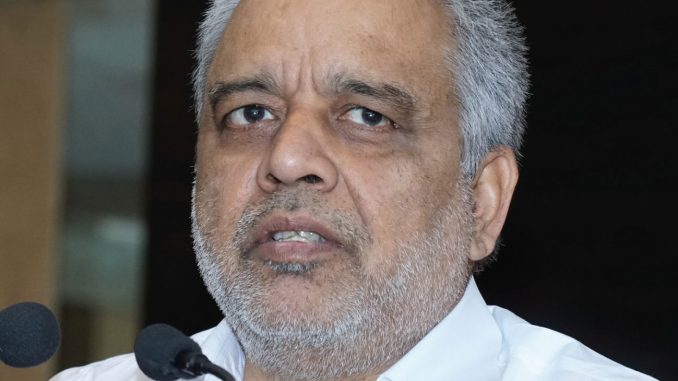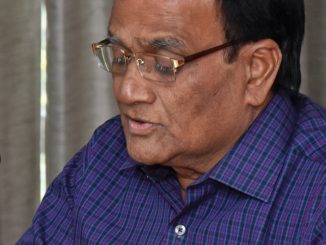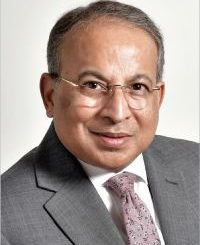
Telangana has been taking initiatives to ensure 24×7 power supply to consumers. It is also aiming to be the first state in the country to provide 24×7 power to agricultural consumers. Besides this, the state is executing a decentralised model for installing solar capacity, which has managed to keep a check on transmission and distribution losses and deal with the intermittency of renewable generation. Power Line, in association with Schneider Electric India, recently organised a workshop on Grid Modernisation in Telangana”, which brought together senior government officials, public and private utility heads, and other key stakeholders in Telangana’s power sector. In this section, we present the key highlights of the workshop. Ajay Mishra, special chief secretary, energy, Government of Telangana, spoke about the government’s vision and perspective. Excerpts from his address.…
24×7 power supply
Telangana is a privileged state where all the villages have access to electricity. A few lakh households, however, do not have individual connections. In line with the Government of India’s programme, announced by the prime minister a few weeks back, the state government is committed to providing electricity to every household by the end of 2018.
Telangana is one of the few states to take up initiatives for 24×7 power supply for agricultural consumers. About two months back, the state utilities started 24×7 power supply to about three to four districts in the state and from January 1, 2018, the utilities will be supplying 24×7 power to all the agricultural consumers. There are significant financial implications of supplying 24×7 power to agricultural consumers. Telangana has around 2.2 million agricultural consumers and the government has provided Rs 47,000 million as subsidy.
Till three years back, the agricultural sector was supplied electricity for six hours during the night. This created a lot of discomfort for the farmers as they had to manually manage switching on and off of the machines during the power supply hours. However, at present, there are six hours of power supply for the agricultural sector in Telangana during the day time. This coincides with the hours of solar power generation.
Meeting the growing power demand
Telangana is a new state and three-and-a-half years back, its contracted capacity was 6,600-6,700 MW (including the state’s own generation, share in central generating stations and short-term and medium-term power purchase agreements). Since November 2014, six months from the formation of the state, the utilities have been supplying 24×7 electricity to all domestic and industrial consumers. The free electricity supply to agricultural consumers in the state has increased from six hours to nine hours in the past three years. Overall, energy consumption in the state has doubled and our contracted capacity currently stands at 12,800 MW.
Energy consumption in Telangana has been increasing and, as per the growth in consumption seen in the past three years, a significant increase is expected in the coming years. With regard to the per capita electricity consumption, at the national level, the consumption is around 1,100 units, much below that in the western countries. Meanwhile, Telangana’s per capita energy consumption of 1,450 units is much above the national average.
At the time of the formation of the state, Telangana’s installed capacity was one-third that required to meet the power demand. While there was power demand of 6,000 MW, the installed generation capacity in the state stood at 4,300-4,400 MW. In order to meet the growing energy demand, around 12,000 MW of generation capacity is planned to be commissioned in the next three to five years. This includes 4,000 MW by NTPC Limited, around 6,800 MW by Telangana State Power Generation Corporation Limited, and 1,800-2,000 MW by Singareni Collieries Company Limited.
Besides this, there is significant focus on developing renewable energy capacity. Telangana is one of the top states in solar power generation, with an installed capacity of 2,800 MW. Another 500 MW to 600 MW of capacity is expected to come up in the next three to four months. Overall, 1,500 MW of solar capacity is likely to be added by 2018. The integration of renewable energy will burden the electricity grid, and it is therefore necessary to ensure flexible grid operations to achieve operational efficiency and cost optimisation. Therefore, for large-scale commissioning of renewable energy, it is important to analyse investment options, undertake a cost-benefit analysis, install advanced communication technologies, and undertake capacity building and staff training.
Decentralised model of solar generation
Telangana is focusing on the decentralised model of solar generation. While the union government and most of the states are implementing the solar park model, it is believed that the decentralised model of generation would work better in Telangana. The solar park model can be implemented if a lot of land is available at one place. However, this is not the case with Telangana. Therefore, the state has implemented the decentralised model wherein the utilities have bid out the solar capacity based on an assessment of the area-wise power demand-supply gap. In 2015, the utilities had bid out a total of 2,000 MW of solar capacity with 50 MW/120 MW/200 MW/500 MW of capacity in different areas.
Although bidding out of capacity in small batches requires significant due diligence, it has resulted in substantial savings and cost optimisation. The decentralised model of solar power generation entails low transmission and distribution losses, as the evacuation of power is within 1-2 km of the generating plant. Under this model, the utilities have also saved on the large investments required for grid improvement, as it entails lower uncertainty of generation.
Also, cloud cover would cut off only a small quantum of capacity from the grid at one point of time. Although there was initially scepticism about the decentralised model of solar generation, of late, the union government has started acknowledging it as an alternative workable model.
Grid modernisation
In order to deliver power to the doorstep of consumers, capacity enhancement and technology improvements are required at the grid level. The functioning of the grid has changed significantly over the years, from one-way power supply to a smart grid. The state power utilities are taking steps to cope with these changes. The electricity grid has to also adapt for the large-scale integration of renewable energy capacity.
Telangana has been one of the leading states in technology adoption. There are complexities in managing the operations of transmission, distribution and generation companies and technology has a significant role in it. Telangana’s state utilities are leveraging technology to manage their operations. The state is a frontrunner in setting up a state load despatch centre. Besides, the utilities are using technology for consumer interaction, outage management and improvement in operational efficiency. Initially, the state is targeting the industrial sector for automation, as there is a focus on improving ease-of-doing business in the state. The state is implementing automation in outage management, which is likely to be completed in the next few months.
Discom health
One of the concerns for the state’s power sector is the financial health of the discoms. The Telangana discoms, like utilities in most other parts of the country, were not in a good shape. In December 2016, the state government gave its commitment to the Ujwal Discom Assurance Yojana (UDAY) scheme. It has provided assistance of Rs 70,000 million, in addition to the subsidy under UDAY, for improving discom health. With UDAY, the performance of discoms has improved significantly. Their aggregate technical and commercial losses stood at less than 15 per cent as of March 2017. The state utilities are committed to further lowering their loss levels.
Telangana’s power sector has witnessed significant growth over the years. With the various initiatives and schemes currently under way, it is likely to achieve a further improvement in operational efficiency, and ensure reliable and quality power for all.



